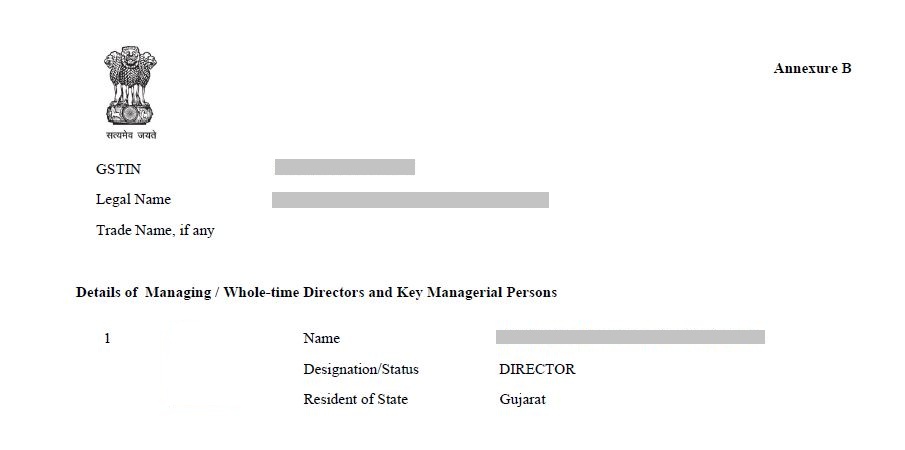7 Crore+ Customers

Affordable Premium

7 Crore+ Customers

Affordable Premium



A GST registration certificate is mandatory for any business with a turnover beyond the amount mentioned in the criteria for GST registration. If a business is run in more than one state, it must be registered separately from each state. There are specific rules under the GST law failing to abide by which businesses are subject to penalties.
Keep reading to learn all about the certificate and the process to obtain it.
A GST registration certificate (Form GST REG-06) is delivered to every taxpayer registered under the GST Act. Businesses must apply for registration within 30 days of becoming liable for GST. Failing to register will make businesses accountable for penalties. As per the law, the certificate must be displayed prominently at the principal place of business.
There are 4 types of GST registrations:
When the annual turnover of a business exceeds ₹40 lakhs, they register as normal taxpayers.
The threshold limit of aggregate turnover for exemption from registration and payment of GST for suppliers of services is ₹ 20 Lakh (₹ 10 Lakh for States of
Manipur, Mizoram, Nagaland and Tripura). The threshold limit of aggregate turnover for exemption from registration and payment of GST for suppliers of goods is ₹ 40 Lakh (₹ 20
Lakh in the States of Arunachal Pradesh, Manipur, Meghalaya, Mizoram, Nagaland, Puducherry, Sikkim, Telangana, Tripura and Uttarakhand).
When a business is seasonal, it is registered under this category.
Individuals who are not Indian residents but have business in India as suppliers or principals fall under this category of registration.
Businesses with an annual turnover of Rupees one crore or more fall under this category. Under this, businesses pay a fixed amount of GST irrespective of their turnover.
GST registration certificates include the main certificate along with two annexures – Annexure A and Annexure B.
The contents of the main certificate are as follows:
Annexure A includes the following details:
Annexure B includes the following details:
People can apply for GST registration from the website.
Step 1: Visit the GST Portal
Step 2: Click on ’Services’
Step 3: Click on ‘Registration’, then click on ‘New Registration’
A page will open which will ask for details like PAN number, Identity Proof and Contact details
Step 4: An OTP will be generated, which will be valid for 10 minutes
Step 5: Then, a Temporary Registration Number or TRN will be generated
Step 6: Login again and follow the previous order, i.e.,
Step 7: Now, verify the OTP
Users will find an option called 'My Saved Applications' from where they can fill out the application form.It is required to fill out the form within 15 days of registration. Approval of applications and the process of certificate registration begins when a designated official verifies the details.
The below-mentioned documents will be required in order to register for GST:
The government does not issue any physical copies of the certificate. They can only be downloaded online.
The steps to download the certificate are as follows:
Step 1: Visit the GST Portal
Step 2: Click on the ‘Login’ button on the right-hand side of the page
Step 3: Put the Username and Password in the respective fields, along with the Captcha
Step 4: After logging in, click on the ‘Services’ option
Step 5: A drop-down list will open, then click on 'User Services'
Step 6: The ‘User Services’ option will have an option saying ‘View/Download Certificate’
Step 7: After clicking on the 'View/Download Certificate' option, users will find the 'Download' option
Step 8: Click on the ‘Download’ option to download the certificate
Certificates that are issued for normal taxpayers or businesses do not have an expiry date. They remain valid unless cancelled by taxpayers themselves or the department.
However, for non-resident taxpayers, certificates are valid for 90 days. Therefore, in order to avoid it from expiring, they need to apply for it again before it expires.
Registering a business within 30 days is necessary after it exceeds the amount mentioned in the GST criteria. The Goods and Services Tax is the government's initiative that has unified the county's tax structure. The certificates are issued to ensure businesses have registered under the GST laws. Therefore, they must display the certificates at the place of business.